Behind Bars: How do prison inmates get surgery and treatment at Changi General Hospital?
Did you know Changi Prison inmates receive treatment and surgery at a public hospital? CNA looks at how this takes place, in the first of a series on prisoners' lives behind bars.
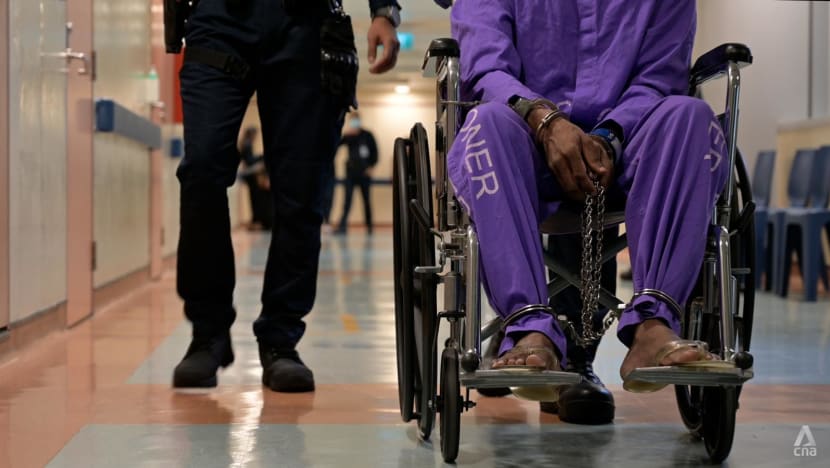
Inmates are accompanied by at least one prison officer during their medical appointments at Changi General Hospital. (Photo: CNA/Eugene Goh)

This audio is generated by an AI tool.
SINGAPORE: As an ambulance pulls up at Changi General Hospital (CGH) with sirens blaring, another vehicle glides silently behind before turning into the building's basement.
The Black Maria, as it is colloquially known, is transporting a special patient.
These patients come in purple jumpsuits, their hands and legs shackled. They go nowhere without at least one escort. And when they are done, they are whisked back to the basement.
They are inmates of the nearby Changi Prison, on a rare trip out in public to attend medical appointments or undergo surgical procedures.
Earlier this month, CNA was given exclusive access to the prison as well as a special secure ward in CGH where inmates are sent for treatment.
The transport of prisoners to and from CGH is a daily affair, and one that requires some time and meticulous planning.
Changi Prison inmates have received medical treatment at CGH – the closest hospital to the prison – since it was still at its Halton Road location close to Changi Village. CGH moved to its current Simei location in 1997.
CNA entered prison at the crack of dawn to follow inmate Peter (not his real name). He was scheduled for an outpatient appointment with an orthopaedic surgeon.
Peter had fallen in his cell toilet and was suffering from pain and stiffness in his left knee. When an MRI scan revealed that he required an operation, Dr Siti Mastura Rahim, associate consultant at CGH’s department of orthopaedic surgery, took up his case.
In March 2023, Peter was admitted to CGH’s secure ward for inmates. He underwent an anterior cruciate ligament reconstruction and meniscus repair, and was also sent for physiotherapy to regain proper use of his leg.
Peter, who is housed in Institution B1, a maximum-security area, has attended regular post-operation reviews at CGH since then.
While CNA was not given access to interview him, Dr Siti said his treatment is progressing well and that he has been doing the prescribed rehabilitation exercises.
The morning of Peter’s one-year post-surgery review started the usual way: All inmates were let out of their single-man cells to do laundry and take any required medication.
Afterwards, instead of returning to his cell, Peter was taken to the prison’s Complex Medical Centre where an officer checked his medical history and state of mind. Shortly after, he joined more than 20 other prisoners to travel to CGH.
They first had to change from their standard-issue shorts and white shirts to purple jumpsuits, which inmates wear when they are out in the community.
They then boarded the Black Maria – the dark-coloured buses and vans that transport inmates between prison and outside places, such as the hospital or court.
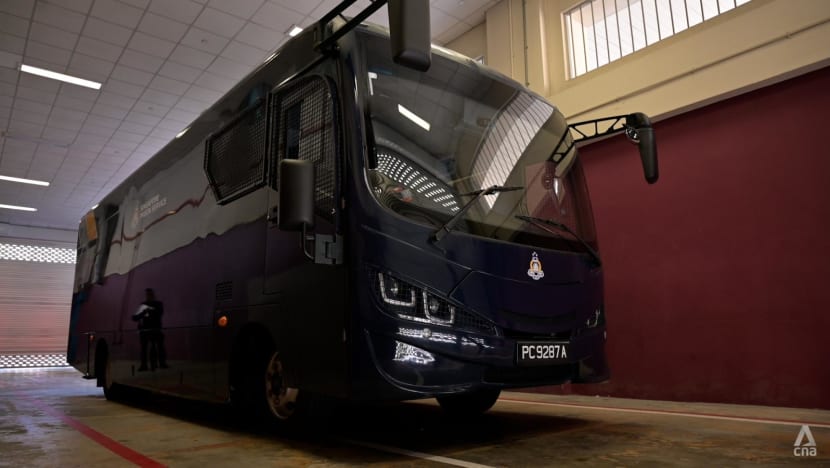
Fifteen minutes later, the bus arrived at the basement of CGH where patients, including members of the public, undergo X-rays or MRI scans.
Some lots at the parking bay are specifically reserved for prison vehicles, allowing inmates to go in and out discreetly. Inmates typically attend medical appointments at the same basement level, though they also go to more public areas like the accident and emergency department when necessary.
The hospital has dedicated facilities and pathways that inmates use, which are closely monitored and set up away from public patient-facing areas, said Dr Poon Beng Hoong, senior consultant and director of CGH’s department of correctional health.
Inmates are kept away from the general public not just for security, but for their privacy.
“At some point in time after release, we do not want them to always be faced with this stigma that they were previously an inmate,” Dr Poon said.
“I believe our patients also believe that inmates require good medical care when they need it, as they are still part of the Singaporean population.”
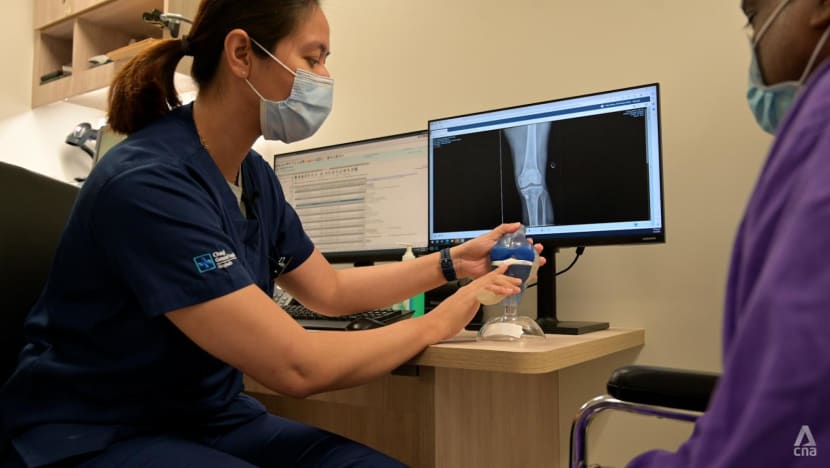
Peter was scheduled to speak to Dr Siti around noon at a specialist outpatient clinic. The appointment took about 10 minutes, with Peter telling the doctor that he still experienced pain when squatting and when the weather was cold.
To allow Dr Siti to examine Peter properly, the prison officer had to unshackle him so he could lie on the bed. Peter also bent his leg to show the doctor how his knee made cracking sounds whenever he squatted.
Once that was over, his restraints were put back on.
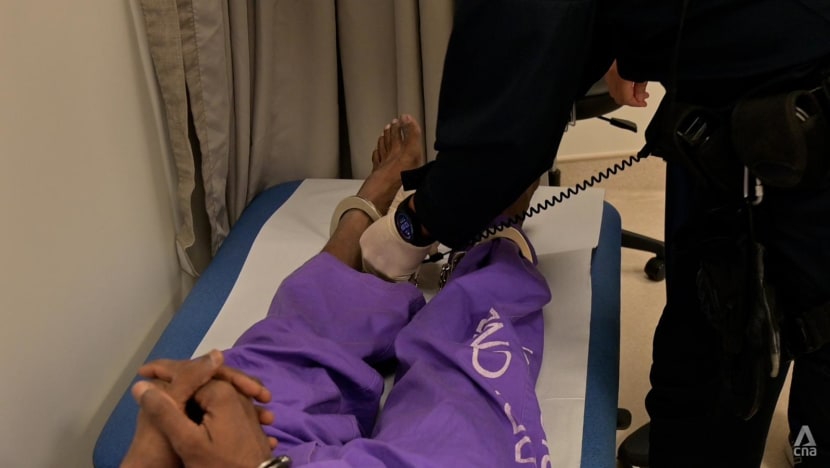
Dr Poon said the key difference in the care of inmates versus the general public comes down to security measures.
“Sometimes, things may may take longer because there is more security clearance required. Some medications, we have to seek clearance because they may be addictive in nature,” he added.
“We have been working very closely with the prison over these years to fine-tune the requirements, so that the inmates are not in any way disadvantaged during the care process.”
The department that Dr Poon heads is a relatively new one, having been formed in 2022 to develop expertise in correctional medicine – which encompasses healthcare and social rehabilitation for inmates.
CGH recently began working with SingHealth Polyclinics to provide primary care for inmates at the hospital from doctors, nurses and other healthcare professionals.
PRISON SECURE WARD
When he was first injured, Peter had to be warded at CGH’s prison secure ward – which looks just like a typical hospital ward, but with several key modifications.
For one, access is limited to authorised personnel. Sliding bars that resemble prison bars separate the nurses’ station from the ward.
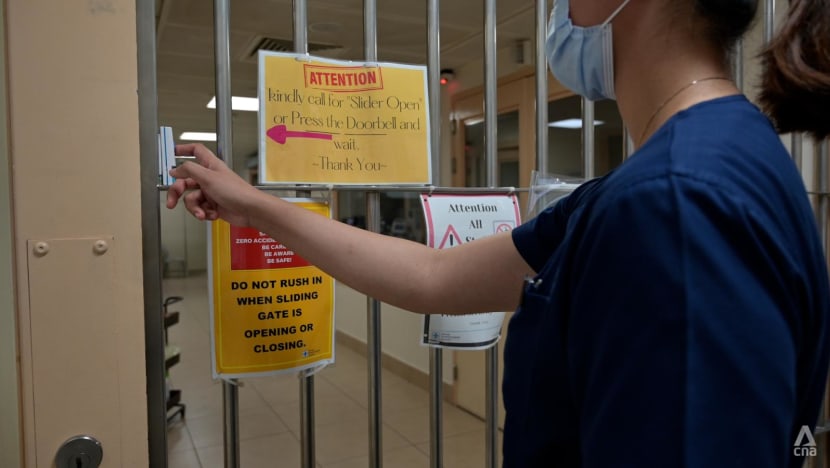
Those who want to enter a room have to be buzzed in by prison officers manning a control centre in the ward – a similar process to when someone needs to pass through a door in Changi Prison.
The beds come equipped with handcuffs and leg shackles to secure inmates, while the usual windows that allow patients to look outside the building are also covered with mesh, preventing any means of escape.
CGH declined to reveal the number of beds in the ward, which caters to both male and female inmates. There are also single isolation rooms, as well as high-dependency rooms for those whose conditions require more acute care.
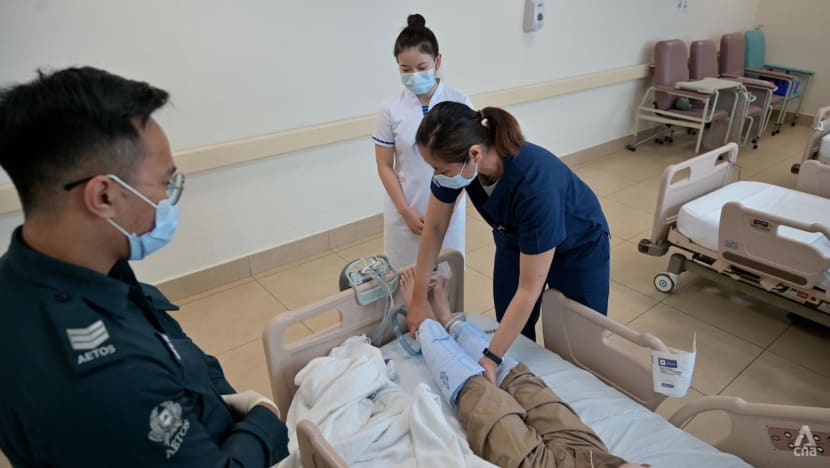
The ward is guarded by a team of Singapore Prisons Emergency Action Response (SPEAR) officers and auxiliary police officers.
This is among various measures that the Singapore Prison Service has put in place to ensure its security, said Chief Warder Cleve Mu, who is in his second year of being officer-in-charge of the prison secure ward.
Sensors have been installed to detect and prevent intrusion in the ward, and the inmates are monitored by security cameras.
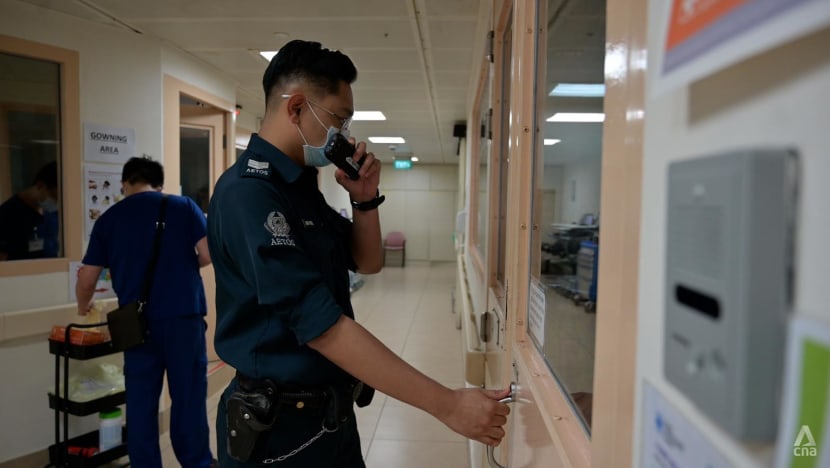
When asked what measures are in place to prevent inmates from escaping, Chief Warder Mu said that just like in Changi Prison, "muster checks" are conducted three times a day to account for everyone there.
When doctors or nurses see inmates in the ward, they are accompanied by at least one officer. A minimum of one armed SPEAR officer and an auxiliary officer are also stationed in each room.
Depending on the inmate's medical condition, his or her restraints may have to be removed for certain medical procedures.
"In those instances, we need to be extra vigilant and ensure the safety of both the medical staff and inmates ... (We also) need to be firm and bar any attempts of communication to the inmates from the members of the public," the chief warden said.
The day that CNA followed Peter to CGH, Dr Siti and senior staff nurse Zhang Cuifang called upon an inmate named John – not his real name – who had just been warded for back pain. The consultation took a relatively short time with no complications.
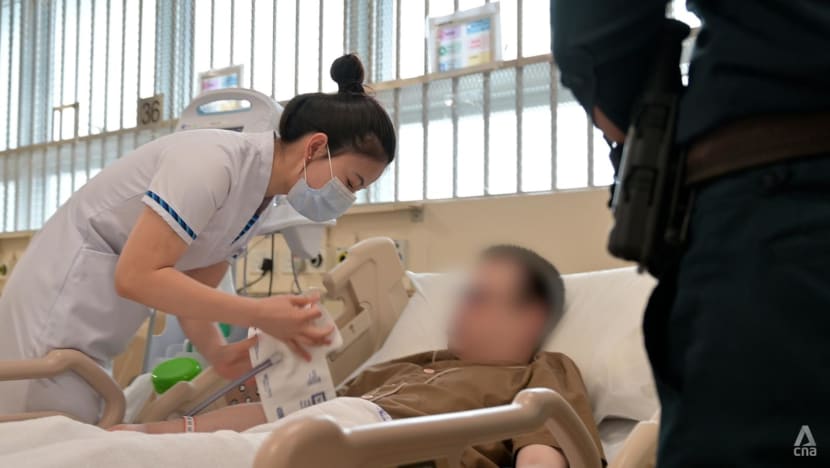
Ms Zhang, an assistant nurse clinician who works at the prison secure ward, said it was initially challenging to pick up the security protocols and policies.
"We have to learn a lot of new things daily, to pick up new skills and knowledge ... This is a multidisciplinary unit so we have different cases coming in," she added.
This expertise is put to use in treating inmates like John and Peter every day.
When Dr Siti was done examining Peter earlier that day, she relayed the good news: It was his last post-op review. This made him smile from ear to ear and put his shackled hands together in a praying motion.
Soon after, he was escorted back to the prison bus in a wheelchair. Time to get back behind bars.














